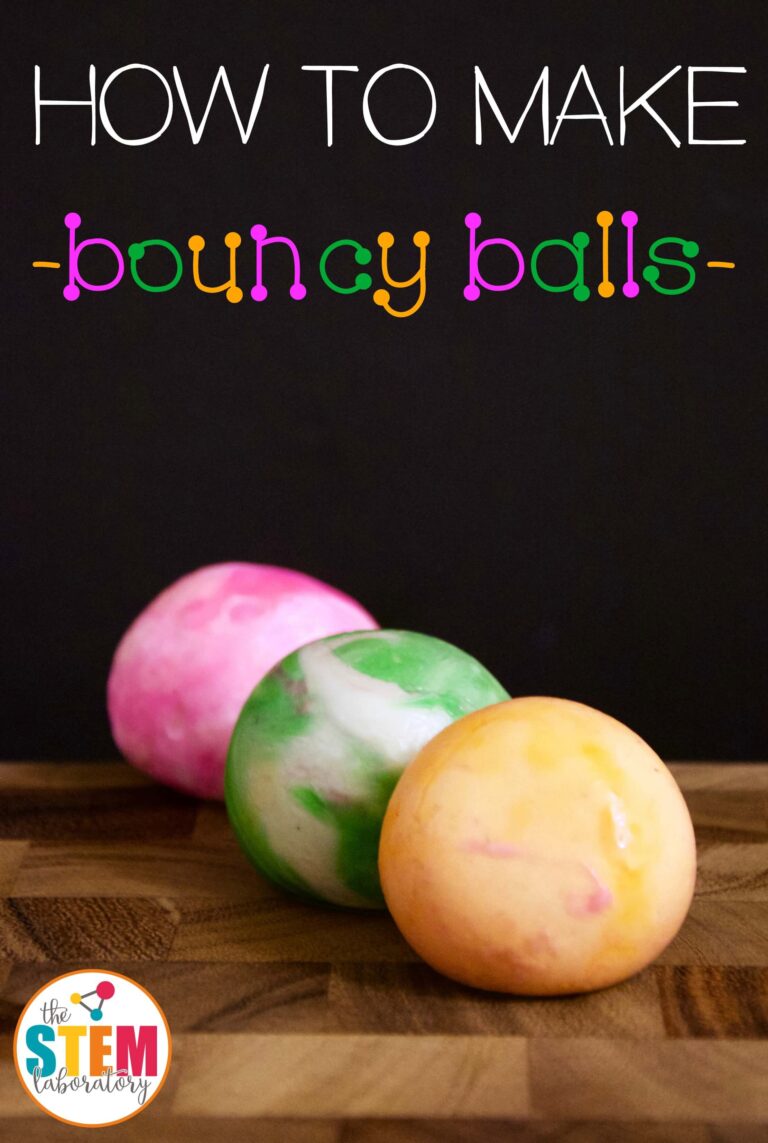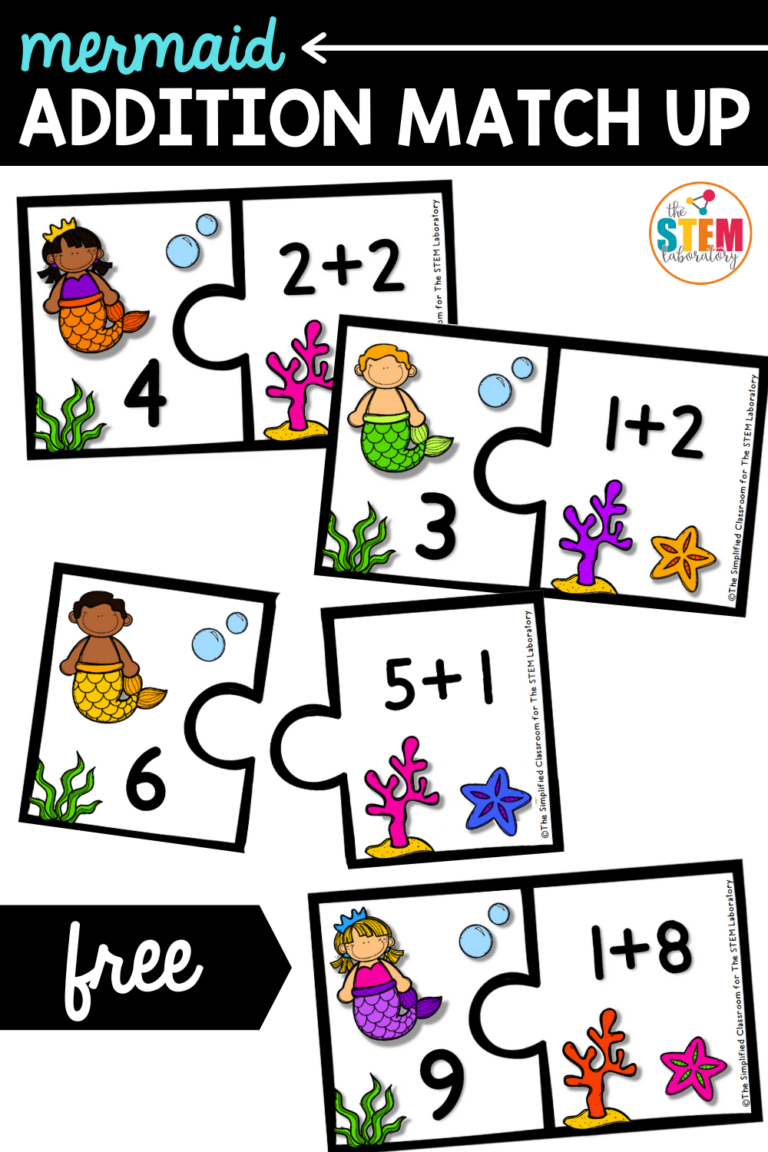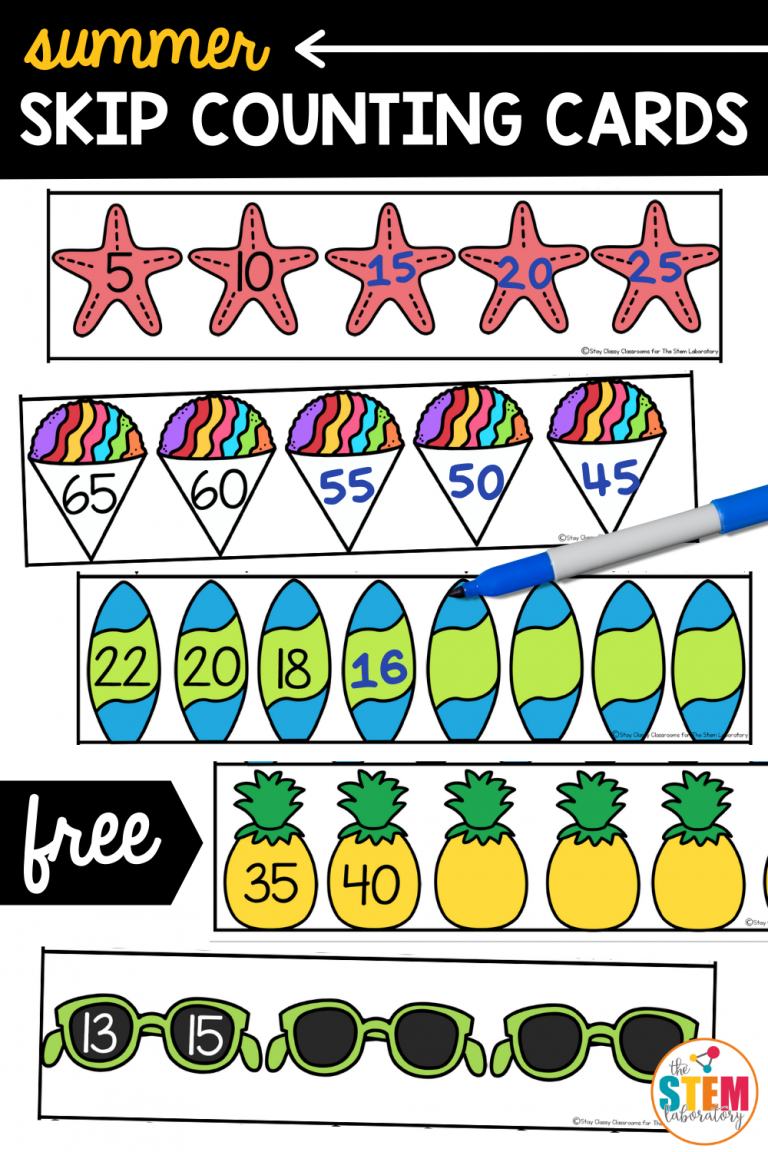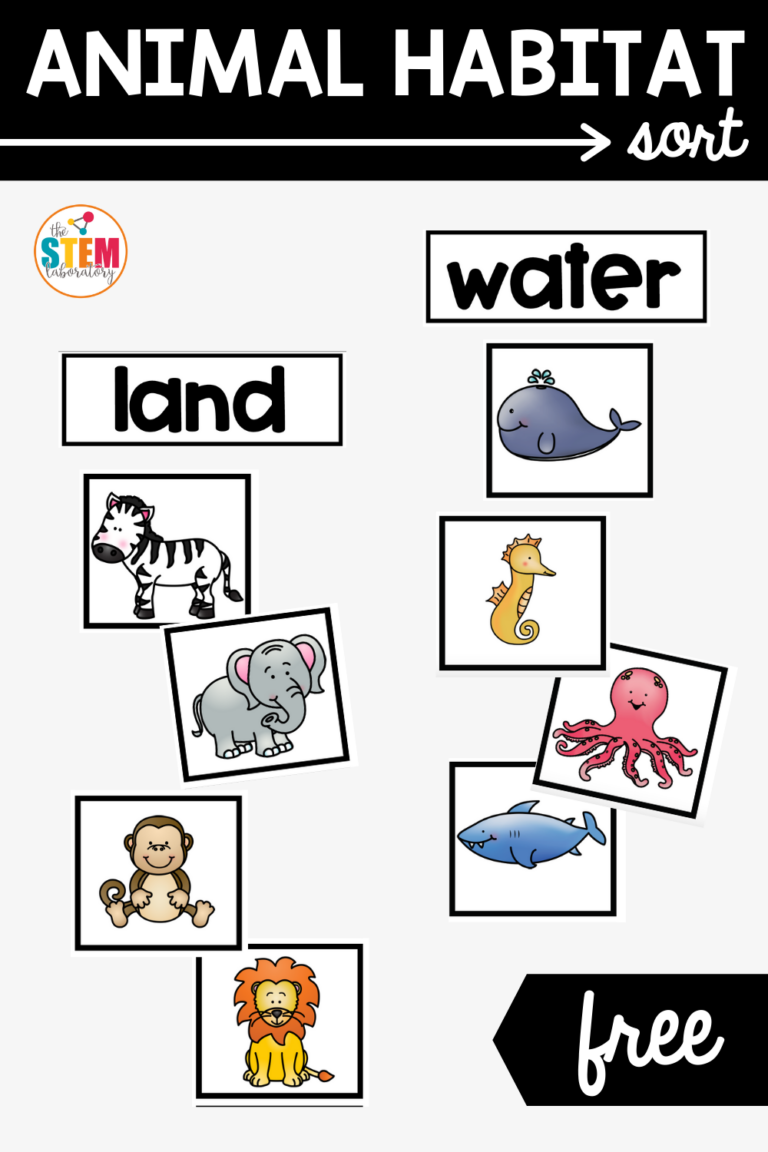Leprechaun Toothpaste
This green leprechaun toothpaste is a must-try science activity this St. Patrick’s Day. Even leprechauns need to brush their teeth after a long day of chasing rainbows, looking for gold and pulling pranks!
What’s more, it’s the perfect compliment to our 30 Science Experiments!
This post contains Amazon affiliate links.
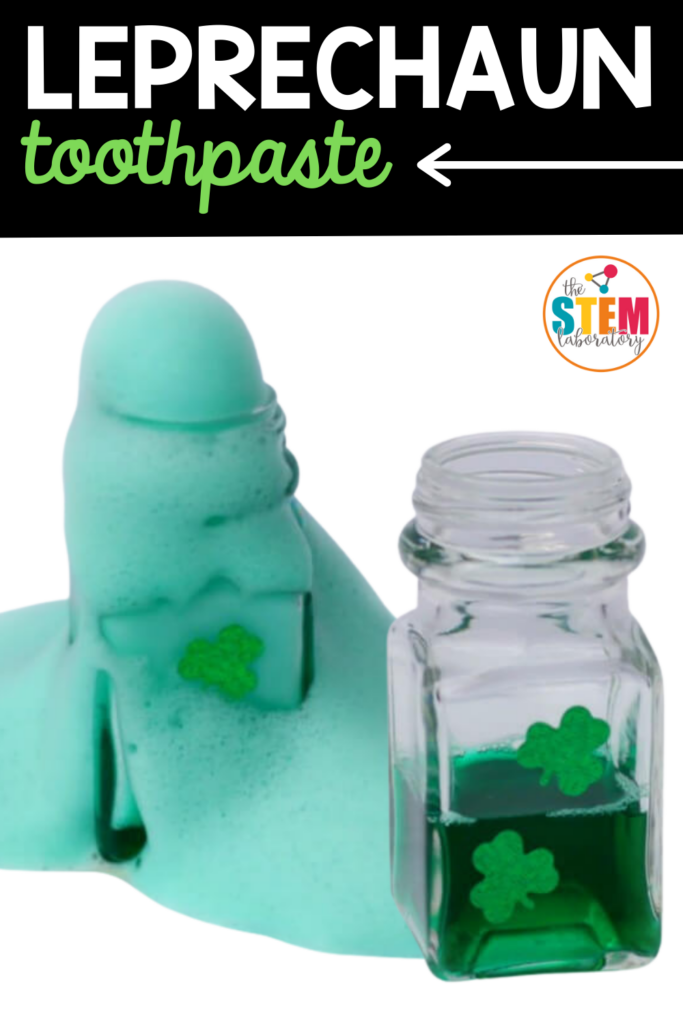
Getting Ready
We already had most of the supplies we needed on hand for the leprechaun toothpaste. The only special item we had to buy was 6% hydrogen peroxide, also known as 20 volume developer. We bought ours at a local beauty supply store, but it’s also available on Amazon HERE.
We grabbed:
- Empty salt shaker (We put some St. Patrick’s Day stickers on our salt shaker to make it more festive.)
- 6% Hydrogen peroxide (20 volume developer)
- Green food coloring
- Liquid dish soap
- Baking dish
- Dry active yeast
- Lukewarm water
Making Leprechaun Toothpaste
We mixed 2 tablespoons of hydrogen peroxide, a few drops of green food coloring and a few drops of liquid dish soap in the empty salt shaker.
An adult should definitely do this step and handle the hydrogen peroxide since it can cause skin irritation and bleach hair and clothes.
Safety Warning: If hydrogen peroxide does come in contact with skin, wash it off immediately. If it comes in contact with eyes, flush with water.
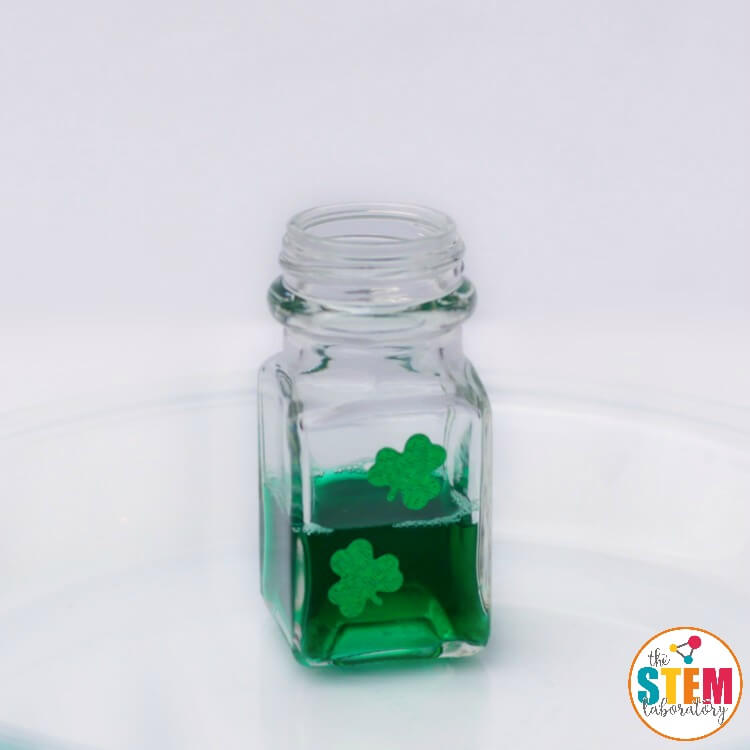
In another small dish, we mixed ¼ teaspoon dry active yeast with ½ tablespoon warm water.
We carefully added the yeast mixture to the peroxide mixture. We had to be quick! The reaction started to happen even before we poured all of the yeast into the salt shaker.
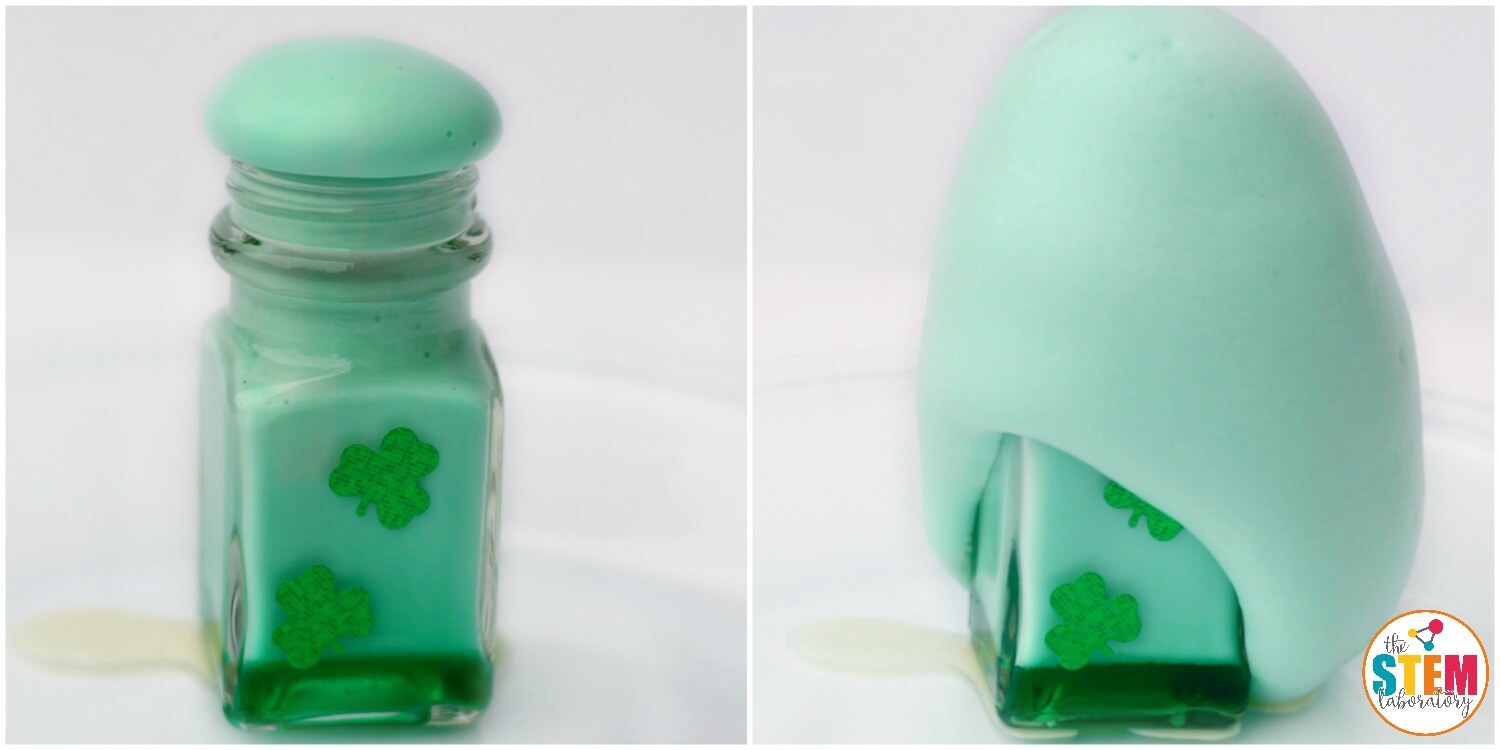
The chemical reaction was a thrill to watch! The kids cheered and squealed with delight as green, soapy foam erupted from the salt shaker.
Their little hands couldn’t wait to touch the bubbly foam. Luckily, it was safe to touch since the peroxide completely broke down in the reaction. What’s left over was just soapy water!
However, we did have to be a little cautious because the salt shaker was warm. The reaction was exothermic, meaning it produced heat, so I touched the salt shaker before the kids did just to make sure it wasn’t too hot.
When I confirmed that it was only slightly warm, I let the kids go at it.
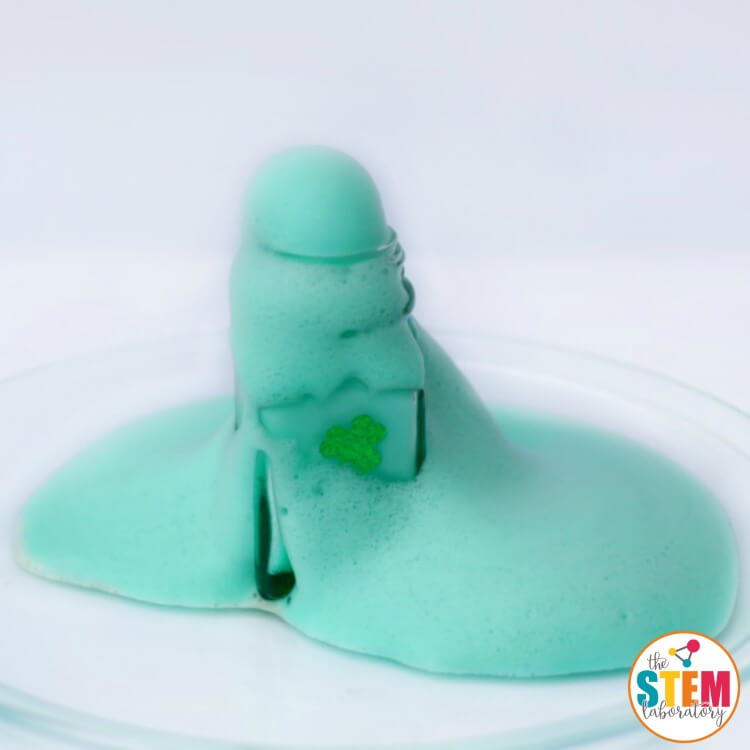
The Science Behind Leprechaun Toothpaste
Hydrogen peroxide easily decomposes into oxygen gas and water.
Yeast acts as a catalyst in this natural reaction, which means the yeast makes the reaction happen more quickly.
When yeast comes into contact with hydrogen peroxide, it produces oxygen gas very quickly.
The oxygen bubbles out of the solution, making foam in the soapy solution, which overflows!
The green foam the erupts out looks just like toothpaste tricky little leprechauns would use.
Super Cool Science Kit
Continue the fun with 30 of our favorite kid-friendly science experiments!


